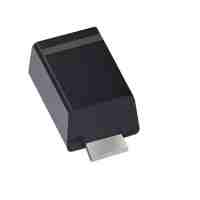The reason why switch diode 1N4148 (often abbreviated as 4148) has become the most widely used switch diode in electronic circuits is not accidental, but because it perfectly balances performance, cost, versatility, and supply chain maturity, almost becoming an "industry standard". The following are the main reasons why it is widely used:

Excellent high-speed switch performance (core advantage):
Extremely short reverse recovery time: This is the core value of it as a switching diode. The typical reverse recovery time of 1N4148 is around 4ns (slightly different from different manufacturers). This parameter means that it can quickly switch from a conducting state to a cutoff state (or vice versa), which is crucial for high-speed digital logic circuits (such as TTL, CMOS), signal modulation and demodulation, pulse circuits, high-frequency signal switching, and other applications.
High frequency response: The fast recovery time enables it to work effectively at relatively high frequencies.
Excellent cost-effectiveness (economic factor):
Extremely low cost: Due to its mature design, simple production process, and huge output (economies of scale), the unit cost of 1N4148 is very low, making it one of the cheapest silicon diodes on the market. In scenarios that require extensive use, such as digital circuit boards, the cost advantage is extremely significant.
High cost performance ratio: Its price is almost unbeatable while meeting the needs of the vast majority of general-purpose high-speed switches. Engineers usually prefer it unless there are special performance requirements such as ultra-high speed, ultra-high voltage resistance, high current, etc.
Good universality (widely applicable):
Moderate parameters: It provides very "balanced" and suitable parameters for general scenarios:
Reverse peak voltage: Typical values of 75V or 100V are sufficient to meet the needs of most low-voltage logic circuits and signal circuits.
Positive continuous current: 150mA (or 200mA), more than sufficient for applications such as small signal switches, clamping, and protection.
Forward voltage drop: approximately 0.62V-1V (depending on current), belonging to the standard range of silicon diodes.
Widely applicable: These parameters make it capable of:
Level conversion and isolation in high-speed logic circuits.
Selection of signal channel switches.
Protection circuit (such as clamp diode protecting input/output ports).
Continuous current and rectification in low-power power supplies (non primary use).
Radio frequency detection and mixing (utilizing their nonlinear characteristics).
Mature and reliable standard packaging (easy to use and produce):
DO-35 glass packaging: This is the most classic and common packaging form of 1N4148. It has a simple structure, is sturdy, and resistant to high temperatures, making it easy to manually weld and automate mounting (SMT versions such as SOD-123 are also widely available).
Compact size: meets the demand for circuit miniaturization.
Easy to identify pins: The cathode is marked with a black ring for easy installation.
Extremely high reliability and stability:
Silicon material: Compared to germanium diodes, silicon diodes have a higher upper limit of operating temperature, lower reverse leakage current, and better stability.
Mature process: With decades of production and application history, its manufacturing process is very mature, quality control is complete, and the failure rate is extremely low.
Unparalleled supply chain maturity (easily accessible):
Multiple global suppliers: Almost all semiconductor giants (such as ON Semi, Dior Inc., Vishay, Nexperia, ROHM, etc.) produce 1N4148 or its directly compatible models (such as BAV99, which is a dual diode but commonly used in similar situations). This ensures extremely sufficient supply and strong substitutability.
Everywhere: from large distributors to small electronics markets, and even repair shops, it can be found almost everywhere. By adopting it in the design, there is basically no need to worry about not being able to buy it.
Comparison and Summary:
Compared to rectifier diodes (such as 1N4007), 1N4007 has higher voltage resistance and current, but slower reverse recovery time (in microseconds), making it completely unsuitable for high-speed switching applications.
Compared to fast recovery/ultra fast recovery diodes: they perform better at higher frequencies or larger currents (with shorter TRR), but their price is usually significantly higher than 1N4148. In the field of general high-speed switches, the performance of 1N4148 is good enough and the cost is much lower.
Compared with Schottky diodes: Schottky diodes have lower forward voltage drop and faster speed (without minority carrier storage effect and reverse recovery problem), but they have higher reverse leakage current and lower reverse withstand voltage (usually<100V). 1N4148 usually has advantages in voltage resistance and leakage current control, and the cost is also lower.
The success of 1N4148 lies in finding an almost perfect balance between high-speed switch performance, extremely low cost, wide applicability, mature and reliable packaging, excellent stability, and unparalleled supply chain assurance. It meets the basic needs of the vast majority of general electronic designs for high-speed, small signal switch diodes, while achieving "good value for money, readily available". This comprehensive advantage makes it the default preferred switching diode for engineers, and it has been enduring for decades, undoubtedly becoming the most commonly used switching diode.
